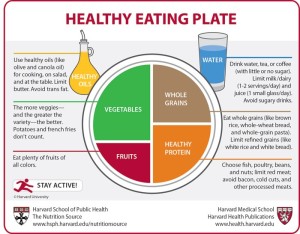An article in TOI on 15.2.2014 spoke of Top Diet trends of 2015.
What trends you should follow?
Someone else’s? or What is most easily followed for a long time and still allows palatable, tasty variety of food?
I am sure the latter!
Few tips:
Most people when talking of controlling what they eat, follow the “All or None” law. If they target fats, it is either NO fats (only boiled/ steamed food) or gorge on deep fried food as if there is no tomorrow!
MODERATION is The KEY!
1. Fats: Our body needs external fats (i.e. in the food we eat) because 1 gm of fat gives almost double the energy 1 gm of protein or carbohydrate gives. Just understand our body can do very well with just 100 mg of sugar per 100 cc of blood; but when it comes to cholesterol we better have 200 mg per 100 cc of blood. Convinced? That fats are more required than sugar.
Each adult can take upto 3 teaspoonful of cooking oil (1 spoon of pure ghee and 2 spoons of oil). That is roughly 500 ml per person per month; That translates to a family of 4 consuming 2 litres of oil per month but most housewives when asked, sheepishly admit they are using almost double and still say “we use less oil’. Use oil in moderation. Restrict deep fried food (snack or main course) only once a week. Stir fry or shallow fry vegetables. Use non-stick tava (ladle), use oil spray or brush to ‘smear’ oil. use low fat butter/cheese.
2. Sugar: Another ‘deadly’ misconception is that Jaggery and Honey are safe and can be consumed in whatever quantity. TV ads smearing honey of a bread slice don’t help the motto of ‘diet’ or sensible eating. 2 spoonful sugar (direct or mixed in drinks, desserts, cakes, pastries or chocolates). Any more sugar is more harmful than more oil.
3. Salt: We, Indians love salt and consume on an average 8-10 Gm/ day (as against a permitted allowance of 4 Gm/ day). All ready-to-eat snacks, savouries are very rich in salt; add to that our national habit of consuming pickles, chutney(s) and papad in huge proportions. Then added salt to curd, raita and dal(s). Excess salt has direct link to high Blood Pressure which in turn causes heart attack, stroke and kidney damage.
4. Fruits and vegetables: the most essential component is consumed not on daily basis and that too small quantities. At least 4-7 helpings each day of fruits, salads and vegetables is recommended.
5. Say NO to refined foods – rava, maida, white bread, polished rice – all are not healthy. Go for whole grain cereals.
6. At least 2-3 servings of milk and milk products (each serving being 200 ml milk, 150 gm curd or 30 gm panir/ cottage cheese) must be had to provide enough probiotics
The modified food plate (as against food pyramid) could be a big help. Decide what you wish to eat; just remember Moderation is the key!





Please comment with your real name using good manners.